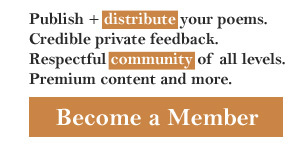This is an analysis of the poem Poor Mailie's Elegy that begins with:
Lament in rhyme, lament in prose,
Wi' saut tears tricklin down your nose; ... full text
Elements of the verse: questions and answers
The information we provided is prepared by means of a special computer program. Use the criteria sheet to understand greatest poems or improve your poetry analysis essay.
- Rhyme scheme: aabXac dddcdc eeecec bXbcbc fXXcfC bbbcbc gXgcXC XhhcXc
- Stanza lengths (in strings): 6,6,6,6,6,6,6,6,
- Closest metre: iambic trimeter
- Сlosest rhyme: enclosed rhyme
- Сlosest stanza type: tercets
- Guessed form: unknown form
- Metre: 01010101 11110111 11010101 1110 01111101 1101 0101111 11110101 1111101 0101 11011101 011 110111011 011111101 110111011 1111 011101111 111 11110111 11011011 11110101 1101 11100101 1101 10110101 01010001 11011101 1111 1101011 111 11111111 11011101 10100101 1101 01011101 1101 11011101 1110101 01110111 1101 11010111 111 1111111 11111101 11010001 1101 01010110 0101
- Amount of stanzas: 8
- Average number of symbols per stanza: 184
- Average number of words per stanza: 34
- Amount of lines: 48
- Average number of symbols per line: 30 (strings are less long than medium ones)
- Average number of words per line: 6
Mood of the speaker:
The punctuation marks are various. Neither mark predominates.
The author used lexical repetitions to emphasize a significant image; she, him are repeated.
The poet used anaphora at the beginnings of some neighboring lines. The same word his is repeated.
There is a poetic device epiphora at the end of some neighboring lines him is repeated).
The poet repeated the same word dead at the end of some neighboring stanzas. The poetic device is a kind of epiphora.
If you write a school or university poetry essay, you should Include in your explanation of the poem:
- summary of Poor Mailie's Elegy;
- central theme;
- idea of the verse;
- history of its creation;
- critical appreciation.
Good luck in your poetry interpretation practice!
Pay attention: the program cannot take into account all the numerous nuances of poetic technique while analyzing. We make no warranties of any kind, express or implied, about the completeness, accuracy, reliability and suitability with respect to the information.
More information about poems by Robert Burns
- Analysis of Epistle To A Young Friend
- Analysis of Song—the Winter It Is Past
- Analysis of Wee Willie Gray

